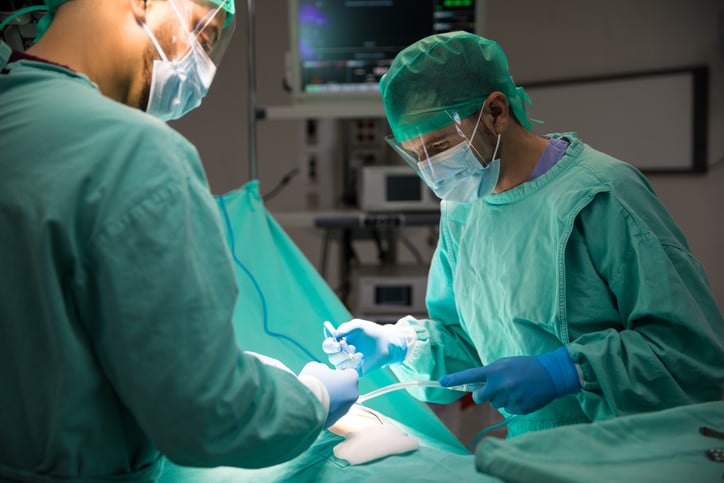
As COVID-19, the virus that causes the novel coronavirus infection, continues to ravage the world, medical providers have had to change virtually everything about how they practice. Suctioning a patient is no exception. Providers once only had to weigh the risks and benefits of suctioning to the patient. Now they must also consider how suctioning might endanger their own health, and how it might imperil subsequent patients if they become infected.
Airway suctioning can generate dangerous aerosols that effectively transmit the virus. In emergency scenarios, Suction Assisted Laryngoscopy and Airway Decontamination (SALAD) may offer a lower-risk alternative to traditional airway suctioning.
Suctioning in a Time of COVID
For most patients, the novel coronavirus is only an inconvenience, though researchers do not yet know the long-term consequences of infection. For a nontrivial portion of them, though, COVID can be life-threatening. In critical care scenarios, treatment providers must be mindful of the risks to themselves and to other patients they see—many of whom may have comorbidities that make them more susceptible to COVID complications.
Suctioning a patient is an invasive procedure that can spread infections and produce aerosols. Conversely, suctioning in certain scenarios, such as during dental surgery, may reduce the risk of contamination from respiratory droplets. Medical providers must weigh the risks of suctioning against the benefits of mitigating other risks.
SALAD: Is It an Alternative During COVID?
SALAD is an aggressive airway management technique for continuously removing blood, vomit, and other secretions. Highly effective following airway trauma and for preventing aspiration, SALAD may also be of use during the COVID crisis. This technique for rapidly removing respiratory secretions may help decontaminate the airway, reducing the number of aerosols produced during suctioning and other procedures.
Because COVID is a new virus, there is little conclusive research on most treatments, including this one. But a simulation by the creator of the SALAD technique and the SSCOR DuCanto CatheterⓇ suggests that SALAD may effectively clear the airway during invasive procedures. The addition of a clinicians’ protective enclosure can further mitigate risk by reducing exposure to the aerosol plume that tracheal intubation typically generates.
Other Protective Strategies
A person does not have to have symptoms or even a positive test result to be infected with COVID. And even young, healthy people have died of the disease. Family and primary care doctors appear to have the highest risk of dying from the disease because of their high rate of ongoing exposure. This means that providers in all settings must take proactive measures to reduce their risk. You aren’t just saving your own life; you may be saving the life of patients whom you would otherwise expose to the virus. These strategies can help you better control the risk:
- Practice handwashing in between patients, after touching patients, and before and after touching any equipment.
- Never touch your face or nose.
- Wear personal protective equipment, correctly, at all times. This is especially important when you are not treating patients but are in common areas where you might still make contact.
- Treat all patients as potential COVID patients and assume everyone with whom you come into contact is infected.
- Store all equipment in secure containers and not in common areas where it might become contaminated.
- Never reuse equipment. Immediately sterilize reusable parts and do not store dirty parts with clean equipment.
The right portable suction machine is easy to clean, is compatible with a variety of attachments, and enables you to attend to patients wherever they are, without risking moving them or exposing them to other patients. For help choosing the perfect device for your agency, download our free guide, The Ultimate Guide to Purchasing a Portable Emergency Suction Device.














